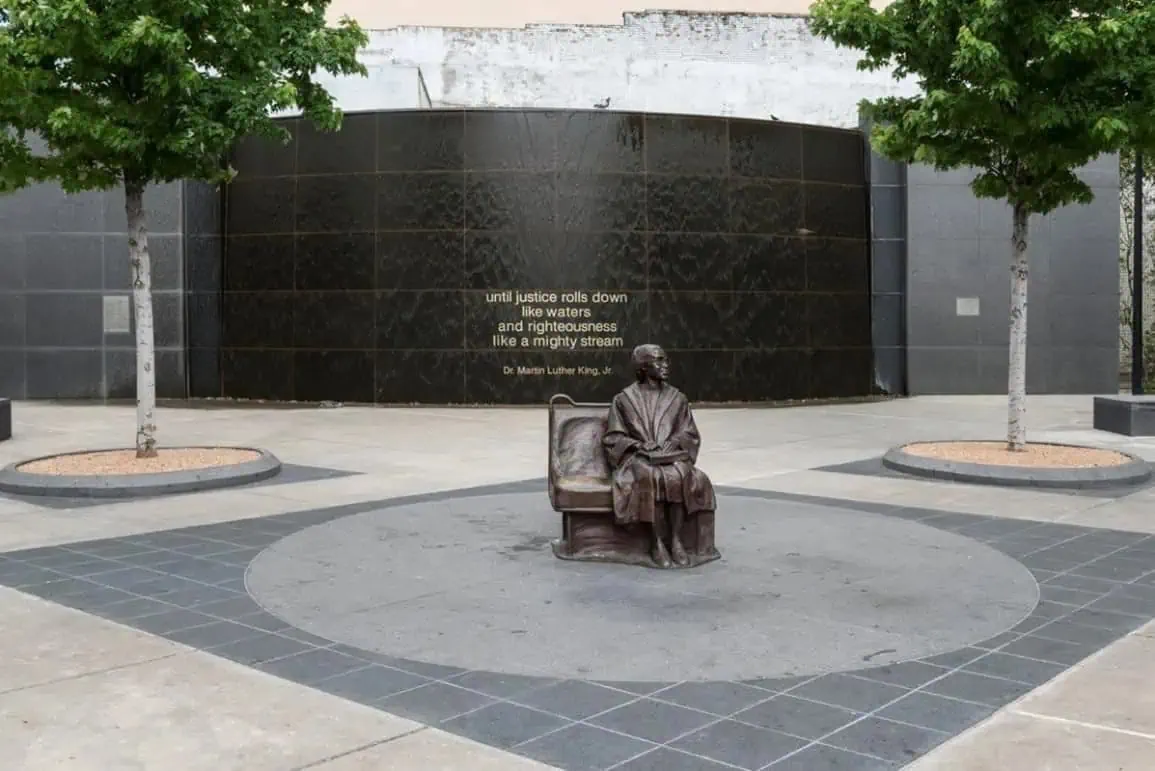Welcome to our guide on the monumental journey toward the ending of segregation. We aim to provide a comprehensive understanding of the crucial steps that paved the way for civil rights advancements in the United States. From historic protests to landmark legal decisions, each chapter of this guide illuminates the path toward equality and justice for all. As a potential job seeker, understanding the history of segregation and the civil rights movement is more than just learning about the past. It’s about recognizing the ongoing impact of these events on today’s society and workforce. The equality, diversity, and inclusion principles from this struggle are now foundational to our employment and community-building approach.
Whether you’re pursuing opportunities with inclusive and diversity-focused companies or seeking to enrich your understanding of American history, this guide offers valuable perspectives. It highlights the significant milestones and figures in the fight against segregation and the importance of continuing this legacy in our current times. Let’s start this educational journey together, enhanced by the dedication of those who courageously fought for a more equitable society. This guide reflects history and a call to action, inspiring us all to contribute towards a more inclusive future.
The Montgomery Bus Boycott: A Spark for Change
The ending of segregation didn’t happen overnight. It started with acts of courage. One key event was the Montgomery Bus Boycott. This boycott became a crucial first step towards ending segregation. It showed the power of peaceful protest.
On December 1, 1955, Rosa Parks took a stand by not giving up her seat. This act sparked the boycott. African Americans in Montgomery, Alabama, decided to stop using the buses. They did this for over a year to demand equal treatment.
Key Points of the Boycott
- Rosa Parks’ arrest led to the boycott.
- They were organized by the Montgomery Improvement Association, led by Martin Luther King Jr., a key figure in ending segregation.
- The boycott lasted 381 days, showing incredible dedication.
- Success came when the Supreme Court ruled bus segregation unconstitutional.
The Montgomery Bus Boycott is a landmark in the fight against segregation. It’s a reminder of the strength found in unity and peaceful protest. For more on Alabama’s civil rights history, see our detailed article. Furthermore, the History Channel provides an excellent overview of the boycott. This event not only led to the ending of segregation on buses but also inspired many more to fight for their rights.
The Court Steps In Brown v. Board of Education
The fight for ending segregation reached a landmark moment in 1954. The Supreme Court’s Brown v. Board of Education decision marked a pivotal turn. It declared public school segregation unlawful. This ruling was a critical step toward ending segregation in all public spaces.
Impact of the Decision
- It challenged the “separate but equal” doctrine from Plessy v. Ferguson.
- The decision stated that segregated schools were “inherently unequal.”
- This case set a legal precedent that helped dismantle segregation laws across the U.S.
The NAACP played a crucial role in this case. Their relentless pursuit of justice paved the way for Brown v. Board of Education to become a reality. The success of this case showed the importance of legal strategies in ending segregation. The decision had a broad impact beyond just schools. It inspired more people to fight against segregation. This fight led to other significant achievements, such as the American Civil Rights Act 1964. This act further cemented the ending of segregation in multiple domains.
You can learn more about the Brown v. Board of Education National Historic Site for a deep dive into the broader civil rights movement. This site offers resources and insights into the struggle for racial equality in America’s education system.
The Civil Rights Act of 1964: Sealing the Deal
Indeed, the fight for equality saw many crucial first steps in ending segregation. Yet, one act made a huge impact. The Civil Rights Act of 1964 was this game-changer. It banned discrimination based on race, color, religion, sex, or national origin.
Why This Act Matters
- It ended segregation in public places like schools and restaurants.
- Also, it banned employment discrimination, making the workplace fairer for everyone.
- Furthermore, the act established the Equal Employment Opportunity Commission (EEOC).
Therefore, this act was more than a law. It was a clear message: America was moving towards equality. Also, it showed that activism works. Movements like the Montgomery Bus Boycott and cases like Brown v. Board of Education led to this win. Additionally, this act paved the way for future civil rights laws. It was a stepping stone for acts like the Voting Rights Act of 1965. Together, these laws have helped to make America more just and inclusive.
Ending segregation wasn’t easy. But the Civil Rights Act of 1964 proved it was possible. After years of struggle, this law helped to turn the tide. For more on the evolution of civil rights, our article on the evolving landscape of civil rights in America offers deeper insights.
The Impact Today: A Look Back at the Ending of Segregation
Now, looking back, the ending of segregation transformed society. It opened doors for equality and ignited change across the nation. The steps taken were crucial for progress. Also, they encouraged future generations to keep fighting for justice.
Today’s Reflections
- Public spaces are now accessible to all, regardless of race.
- Education and employment opportunities have expanded for racial minorities.
- However, the fight for equality continues as challenges remain.
So, while much has been achieved, the battle isn’t over. Segregation laws have ended, but inequality persists in other forms. Today, we witness movements like Black Lives Matter continuing the fight for racial justice. This shows the lasting impact of earlier milestones in the civil rights movement.
Therefore, understanding the past is vital. It shows us how far we’ve come and the steps to move forward. Schools like Brown v. Board of Education National Historic Site educate the public on civil rights history. These educational efforts highlight the importance of remembering the struggle for equality. The journey towards equality is ongoing. Celebrating the successes in ending segregation reminds us of the power of collective action. Moreover, it inspires ongoing efforts to create an inclusive and fair society for all.
Key Figures in the Ending of Segregation
Many brave individuals played roles in the ending of segregation. Their actions paved the way for change and equality.
Influential Leaders
- Rosa Parks: Her arrest sparked the Montgomery Bus Boycott.
- Martin Luther King Jr.: A key leader in the civil rights movement.
- Thurgood Marshall: His legal work led to the Brown v. Board of Education decision.
Also, countless others contributed. They marched, protested, and fought for rights. Thus, their collective effort was crucial. Moreover, groups like the NAACP were vital in these efforts. They provided legal and organizational support. Beyond these names, communities played a significant role. Local activists, students, and everyday citizens mobilized for change. So, the ending of segregation was a group effort. It showed the power of unity and shared purpose.
Remembering these individuals is essential. They remind us that change is possible with determination and courage. Lastly, their legacy inspires current and future generations to fight for justice and equality. For more on these figures, the National Civil Rights Museum provides in-depth information. Additionally, NAACP’s website offers insights into ongoing efforts for racial equality.
Challenges and Perseverance: Behind the Scenes of Change
The path to the end of segregation was fraught with obstacles. Activists faced not only legal barriers but also personal risks.
Obstacles Along the Way
- Violent backlash from segregation supporters.
- Legal challenges and slow-moving courts.
- Economic hardships due to boycotts and protests.
Despite these challenges, the commitment never wavered. Moreover, the support from local communities provided strength. Additionally, international attention helped put pressure on change. So, perseverance was critical to the movement’s success. The boycotts, sit-ins, and marches demonstrated this tenacity. Also, the strategic legal battles fought by the NAACP showcased resilience. Hence, these efforts combined to create a powerful force for change.
The ending of segregation showcases the power of enduring commitment. It reminds us that achieving justice may be a long road, but remaining steadfast can lead to monumental change.
Continuing the Legacy: The Importance of Education and Awareness
The ending of segregation was a monumental step, but the journey towards equality continues. Education and awareness are crucial in keeping the legacy alive.
Spreading Knowledge
- Teaching history accurately helps avoid repeating past mistakes.
- Programs and initiatives that promote diversity foster understanding and acceptance.
- Public discourse about ongoing issues of inequality is vital for progress.
Moreover, celebrating key dates and figures from the civil rights movement encourages shared national pride. Additionally, engaging in dialogues about race and equality can drive societal change. Therefore, individuals and institutions must work together to educate and raise awareness. Today’s efforts to continue this legacy are seen in community programs, educational curriculums, and national policies to combat discrimination. Recognizing the progress made while acknowledging the work ahead keeps the spirit of the civil rights movement alive.
Education and awareness about ending segregation and its ongoing impact are essential. They shape the path toward a more inclusive and just society.
FAQ’s
When did segregation officially end?
Segregation legally ended with the Civil Rights Act of 1964.
Who were the prominent figures in ending segregation?
Leaders like Rosa Parks, Martin Luther King Jr., and Thurgood Marshall were pivotal.
How did communities contribute to the ending of segregation?
Through boycotts, protests, and legal actions, communities pushed for change.
What challenges did activists face?
They faced violence, legal hurdles, and economic hardships but persevered.
Is segregation still an issue today?
While legal segregation has ended, systemic inequalities and racial divides persist.
What role did the media play in ending segregation?
The media played a significant role by bringing national attention to the injustices and violence faced by African Americans in the segregated South. This helped gain support for the civil rights movement.
How did segregation impact education in the United States?
Segregation led to unequal and underfunded educational opportunities for African American students. The landmark Brown v. Board of Education case highlighted these issues and led to the desegregation of schools.
Were there any immediate changes after the laws on segregation were passed?
Changes after the Civil Rights Act of 1964 were gradual. Some areas resisted desegregation, leading to continued efforts and struggles for equality.
How can individuals contribute to racial equality today?
People can contribute by educating themselves on racism and civil rights history, supporting racial justice organizations, and actively promoting diversity and inclusion in their communities and workplaces.
What lessons can we learn from the ending of segregation?
The ending of segregation teaches us the power of collective action, the importance of perseverance in adversity, and the ongoing need to fight for justice and equality.
Conclusion
The journey to the ending of segregation reveals the strength of the human spirit in the face of injustice. This pivotal period in American history was defined by the power of collective action and the resilience of those who fought for equality. Reflecting on the crucial first steps toward ending segregation, we recognize the ongoing struggle for racial equality. The legacy of the civil rights movement continues to inspire us today. It reminds us of standing up against injustice and working together to build a more inclusive society. The challenges faced and overcome in the past provide valuable lessons for the present and future. They demonstrate that change is possible when people unite for a common cause.
Joining Diversity Employment is a proactive step you can take to continue this legacy of change. By becoming part of a community that promotes diversity and inclusion, you contribute to a world where everyone is valued and afforded a truly equal opportunity employer. Together, we can make a difference in the ongoing fight for equality and justice for all. Let us honor the past by moving forward with purpose. Join Diversity Employment, upload your resume today, and be part of the change you wish to see.




